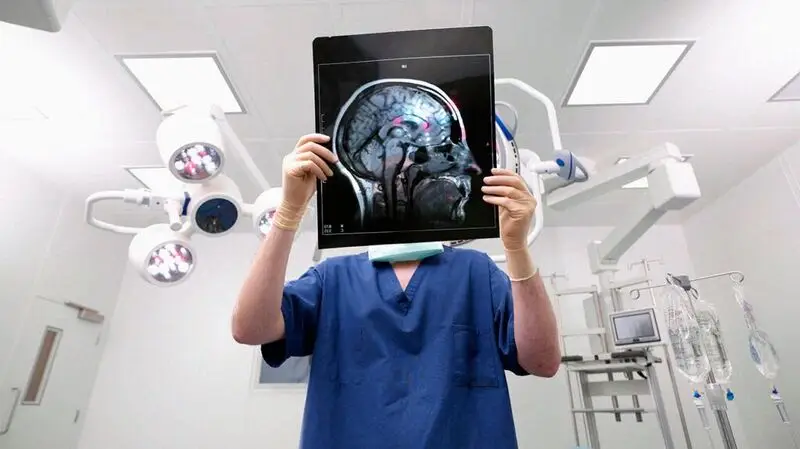
- Dementia is a growing problem worldwide, with numbers predicted to almost triple over the next 30 years.
- The rise is generally attributed to the growing and aging population, but lifestyle can also contribute.
- However, a new study suggests there may be some good news in the field of dementia.
- It found that people’s brains have been getting larger over the past 100 years, and this increased brain reserve could, potentially, reduce the risk of age-related dementias.
As healthy people get older, the brain
A new study, from UC Davis Health, has suggested that it might. Researchers found that people born in the 1970s had brains that were, on average, 6.6% larger than those of people born in the 1930s. They suggest that larger brain size means increased brain reserve — which may reduce the risk of age-related dementias.
The study is published in
“While these newly published results add to the body of literature on brain size and changes over time, this study was largely conducted in healthy, well-educated, non-Hispanic White individuals, and so [these findings] are not necessarily generalizable to other groups or individuals.”
— Ozama Ismail, PhD, Alzheimer’s Association director of scientific programs, who was not involved in the study.
Currently,
Although some memory loss is a natural part of aging, dementia is not. Dementia describes a range of diseases, with the most common, being Alzheimer’s disease, causing 60-80% of cases. Others include vascular dementia, Lewy body dementia (which may be associated with Parkinson’s disease), frontotemporal dementia, and mixed dementia.
Symptoms of dementia, which worsen over time, may include:
- memory problems
- asking the same question repeatedly
- difficulty finding or understanding words
- feeling confused in unfamiliar environments
- problems dealing with money and numbers
- anxiety and withdrawal
- difficulty planning and carrying out tasks
- mood, personality and behavior changes
- sleep disturbances
- obsessive tendencies
In all types of dementia, as brain cells are damaged and die, there is some degree of
This study looked at participants in the Framingham Heart Study (FHS). This long-term study has followed 15,000 individuals for more than 75 years.
Of the FHS cohort, 3,226 people had two MRI scans that were suitable for this study. Of them, 1,706 (53%) were women, and 1,520 (47%) were men. The scans measured intracranial volume (ICV), cortical gray matter, cerebral white matter, hippocampal volume, cortical surface area, and cortical thickness measures.
The participants were all born between 1930 and 1970, with the median decade of birth being the 1950s. People born in the 1970s were, on average, 1.6 inches taller than those born in the 1930s, so the researchers adjusted for this when comparing brain measurements.
People born in the 1970s had greater brain volumes than those born in the 1930s.
They had a 6.6% greater ICV, 7.7% more white matter, 2.2% more cortical gray matter, 5.7% greater hippocampal volume, and 14.9% larger cortical surface area. The one measure that had decreased was cortical thickness, which was 20.9% lower. These differences remained significant when the researchers adjusted for height differences.
“The decade someone is born appears to impact brain size and potentially long-term brain Health,” said Charles DeCarli, MD, first author of the study, distinguished professor of neurology, and director of the UC Davis Alzheimer’s Disease Research Center in a press release.
“Genetics plays a major role in determining brain size, but our findings indicate external influences — such as health, social, cultural and educational factors — may also play a role,” he said.
“Larger brain structures like those observed in our study may reflect improved brain development and improved brain health. A larger brain structure represents a larger brain reserve and may buffer the late-life effects of age-related brain diseases like Alzheimer’s and related dementias.”
— Charles DeCarli, MD
This
However, this observed effect could be due to other factors, as Ismail told Medical News Today:
“Larger brain volumes may be beneficial in maintaining resilience to cognitive decline and dementia, but many other factors can contribute to resilience, including genetics, environment, socioeconomic status, education, and active vs. sedentary lifestyle.”
The researchers in this study suggest that the increase in brain volumes over the four birth decades in their study could predict a lower risk of dementia in people born later in the FHS.
The researchers acknowledge that their study cohort was predominantly non-Hispanic White, healthy, and well-educated, so not representative of the general population of the United States. However, they emphasize that the strengths of the study include the fact that it has followed 3 generations, spanning more than 80 years of births.
Ismail called for further studies that include a greater diversity of people:
“More diversity in research populations is needed before conclusions can be made about changes in brain size over generations and the influence it may have on cognition, resilience, and dementia risk.”
“This is particularly important given the known sociocultural and health disparities that exist in underrepresented populations,” he added.
The Alzheimer’s Association’s U.S. Study to Protect Brain Health Through Lifestyle Intervention to Reduce Risk (U.S. POINTER), which should publish results next year, aims to help address this gap in the research, as Ismail told MNT:
“In the U.S. POINTER Study, more than 2,000 volunteer older adults who are at increased risk for cognitive decline are enrolled and will be followed for two years. Nearly 30% of current participants are from populations historically underrepresented in Alzheimer’s/dementia research.”





